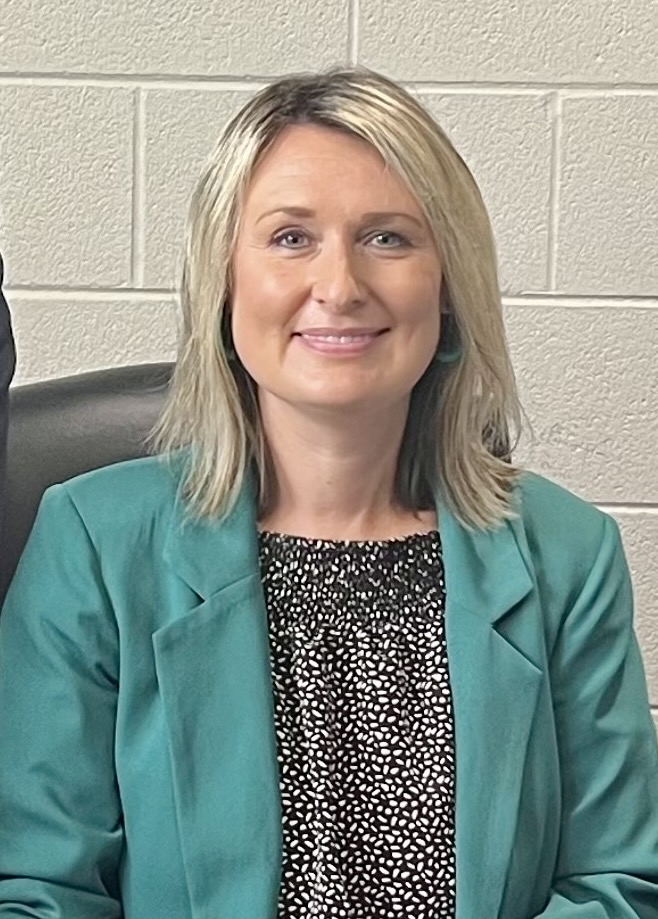
Kristina Slusser
By Kristina Slusser
kristina.slusser@kenton.kyschools.us
Literacy is an ever-evolving skill. At no point does an individual “max out” their reading skills-. We can always get better at reading in both fluency and comprehension.
Children begin learning to read at a very early age and they continue to develop this skill throughout school – and hopefully life. It is common practice for early childhood educators and elementary teachers to read aloud to their students to model effective reading skills. Young students are read to in order to hear proper pronunciation, inflection, speed, tone and many other aspects that go into reading well. Students also learn challenging, multisyllabic words by hearing them pronounced over and over.
But as children grow older, they are read to less and less. We treat students as if once they’ve mastered sight words and letter sounds, they should be able to read without issue on their own all of the time. This is not the case.
As students grow older, texts grow in complexity. High school students are exposed to new words and new patterns constantly, yet we expect them to figure these nuances out on their own. Not all readers have such capabilities.
Reading to older students is not a widely accepted practice; however, I believe there are definite benefits to doing so. Do older students need to be read to every day? Of course not. But planning to read aloud for specific purposes still, in my opinion, has a place in the upper grades where texts are difficult and varied in structure and purpose.
Just as it would not be appropriate to read to older students every day without a chance for them to read on their own, it is similarly inappropriate to read every text to the students without logical reasoning. That is why I choose, very explicitly, when and what texts to read to my students.
As a general guideline, if the text is overtly challenging or the structure is new and uncommon – typically nonfiction – I will read to my students to introduce them to the new style and the challenging diction and syntax. Most times, the amount of time spent reading to my high school students totals no more than 50 minutes a week; this could be split up into an infinite amount of ways depending on the lessons for the week.
But there are many benefit to reading to older students besides to just introduce them to something new; this is why I read to my high school students:
5 Reasons Why I Read To My High Schoolers
- They enjoy it.
Not everyone is an avid reader; not everyone enjoys getting lost in a book. However, most people love hearing stories.
When I read to my students, it’s as if I am taking them on a journey – and they enjoy it. Hearing me read with inflection and emotion allows them to see that reading can be fun and it makes reading a little more enjoyable for those who do not usually find the fun in it. Being read to helps students rediscover a love of reading that many have lost between learning to read and high school.
- Students need to hear new words.
Hearing how unfamiliar words are pronounced allows a student to more quickly recognize, understand and use new words. When I read aloud to my high school students, they cannot simply ignore words they do not know. Their eyes trace the words on the pages and their ears take in what I’m saying. There is pronunciation placed alongside sight recognition. Words are learned more quickly this way.
Also, I can ensure that students do not skip over words they do not know. Reading aloud allows me to stop whenever we approach a word that is complex or new to most students. I can then model figuring out what the word may mean in the context of the text.
- I can model good reading habits.
When I read aloud, I control the pace. (Yes, students can ignore me and read ahead, but close monitoring can lessen the likelihood of this.) Controlling the pace allows me to model how good readers read.
I can talk students through parts of the text to show them the thought process behind how I make meaning of the text. I can stop the reading and show students how to summarize and predict, how to visualize and interpret. I can do all of this while formatively assessing nearly every student in class.
- Teachable moments.
Reading aloud to my high schoolers opens up many opportunities for teachable moments. Discussions that are based around text open up the minds of students and allow them to be more receptive to learning.
Dialogue is created through reading together. Of course, dialogue can occur even if the students have read the text individually, but the immediate feedback from teachers and peers on their thoughts is beneficial. Less meaning, less impact is lost in the time between reading and discussion when we read together.
In fact, more discussion happens when we read together. Instead of having to write down their thoughts and come in the next day ready to talk, we can talk right then, right when they have a question, a comment or a concern. Through this, I am able to use the text as a foundation for the teaching of many lessons.
- Grammar.
There is something to be said for explicit grammar instruction; however, seeing grammar rules used in context may be more beneficial to students. I teach juniors; the ACT is a heavy burden hanging above all of their heads. The English section of the test does not require them to state grammar rules verbatim; instead, it tests whether they know how to use grammar in context. So why not see grammar rules used in context?
When I read aloud to my students, I can point out how and why the author uses a semicolon they was he/she does; why the dependent clause is used at the beginning of a sentence, etc. I can then have them model a sentence after a sentence in the text. This type of grammar instruction has proven, in my classroom, to be more effective in getting students to know how to employ grammar rules. But it’s not all about the test. Seeing how good writers write allows students to become better writers through imitation.
Reading to students doesn’t need to end when they have learned to read on their own. Reading aloud to students has a place in every classroom K-12.
Kristina Slusser is an English teacher at Simon Kenton High School (Kenton County). She has been teaching for four years and is a track and cross country coach. Slusser is a doctoral student at the University of Cincinnati pursuing a degree in educational studies-literacy.



Leave A Comment